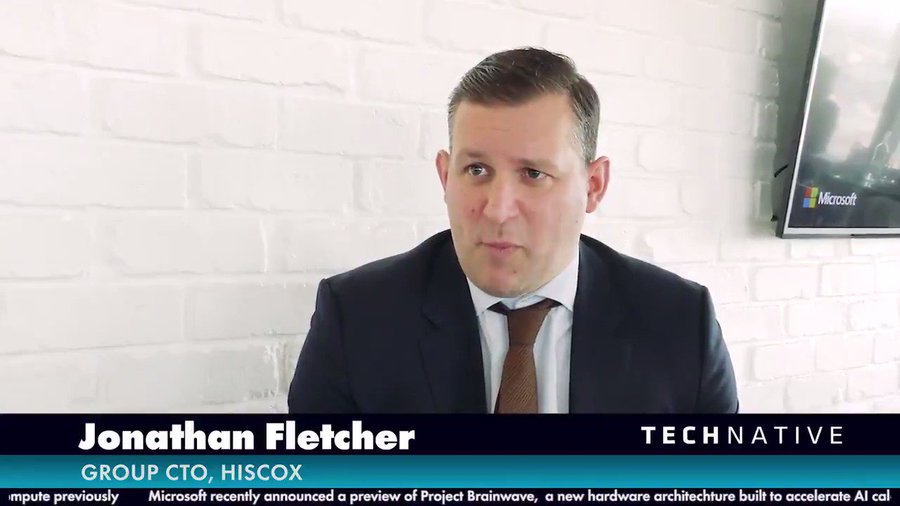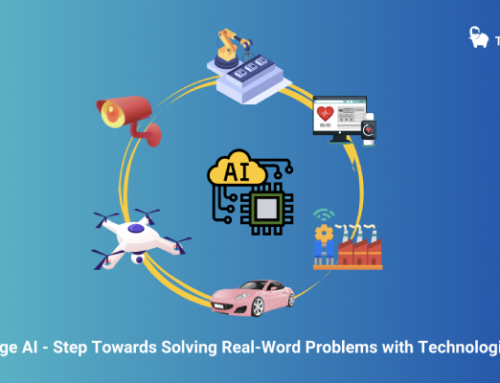
Digital transformation is in full effect, and giants of the tech industry are investing heavily in new technologies
Due to its nearly limitless potential, artificial intelligence is at the forefront of much of this research, and Microsoft has been making headlines with new technologies, major acquisitions, and innovative ideas. The tech giant has long been moving toward a cloud-based future, and investment in AI is helping solidify its path toward becoming the AI leader in a number of fields. Here are a few technologies Microsoft has invested in recently and the potential impact they’ll have on the company’s future and society as a whole.
Project Brainwave
Traditional computer hardware can perform complex tasks quickly. However, most hardware is tuned primarily for general-purpose performance, and systems that demand effective real-time performance often rely on specialized hardware, as milliseconds saved can be critical in certain scenarios. Microsoft’s Project Brainwave relies on a type of chips known as a field-programmable gate array. FPGA chips can be modified using software, enabling excellent flexibility for honing the chip toward specific applications and making real-time speeds more easily attainable. Integrated into Azure Machine Learning, Project Brainwave will use optical technology to mark potentially defective products, allowing companies to eliminate much of the labor required in quality assurance and allowing employees to focus on the subset of products that are too complex to test with computers alone. Kap Sharma from Hewlett Packard Enterprise recently spoke to us about Project Brainwave.
Better Accessibility
According to the World Bank, more than one billion people around the globe have a disability. For some, disability can have a dramatic effect on being able to use a computer, and, as we all know, computer access is effectively mandatory for a growing portion of the population. With only one in ten people with a disability having access to assistive technologies and products, according to Microsoft’s chief legal officer and president, Brad Smith, the tech field can certainly do better. Microsoft pledged $250 over the next five years to develop better accessibility capabilities, and it’s leaning on AI to better meet the diverse needs of users. Many of these technologies go far beyond what is currently available today: the Seeing AI app is designed to narrate what a user’s phone is seeing, giving it far greater capabilities than screen-readers of the past, and the Helpicto app is designed to help people who have autism better make use of technology.
Transforming Healthcare
Launched in 2017, Microsoft’s Healthcare NExT initiative aims to close the gap between current healthcare systems and the promise of AI and cloud computing, and it’s taking a far-reaching approach. Doctors spend a considerable amount of time taking notes while talking with patients and in between appointments; Project Empower MD, which is being developed in conjunction with UPMC, will listen to what doctors say and observe what they do to help automate certain tasks. Microsoft Genomics will empower medical professionals to tap into the power of Microsoft Azure to perform genetic processing tasks, enabling new types of treatment. Microsoft is also working to make compliance with HIPPA and other regulations simpler, which helps medical professions spend their time improving care for patients and knowing that patient data is properly and legally secured.
Dynamics 365 AI Solutions
Microsoft is working with Accenture to combine Microsoft’s AI Solution for Care with Accenture’s Intelligent Customer Engagement framework to help digital assistants provide better understanding and responsiveness for varying customer needs. Furthermore, Microsoft and Accenture will be working to incorporate Accenture Intelligent Revenue Growth technology into Microsoft’s AI technology, with the goal of using machine learning to helps sales professionals. The goal is to increase the speed by which sales departments can improve research and deployment by a factor of ten, helping companies stay competitive in crowded markets and find use cases more traditional options would otherwise miss out on. Vertically integrated solutions hold tremendous promise, and this partnership between two experienced companies can prove to be beneficial.
Jonathan Fletcher, CTO at insurance giant Hiscox recently spoke to us about their use of the AI tools available with Microsoft Azure.
Human-Computer Interaction
Microsoft’s Cortana voice assistance has proven popular, but it’s not the only interactive tool the company is working on. In China, the sophisticated Xiaoice chatbot has made tremendous strides in recent years, and, with more than 16 channels available on WeChat and other messaging services, the bot has more than 500 million friends across these networks. Microsoft CEO Satya Nadella described the bot as a “bit of a celebrity” in China. Much like Google’s controversial Duplex, Xiaoice also has voice features, but it calls users upon request instead of placing calls on behalf of users. The polished and bright voice it produces has received praise, partially for its artificially bright intonation that isn’t designed to fool people into thinking they’re talking with an actual person while still providing a human-like experience. Microsoft hasn’t yet announced when Xiaoice will come to other regions, but it’s a safe bet the technology will make a splash once it arrives.
Credit scoring platform TransUnion, formerly Call Credit, are working with Microsoft to harness AI technology to improve risk and fight fraud.











